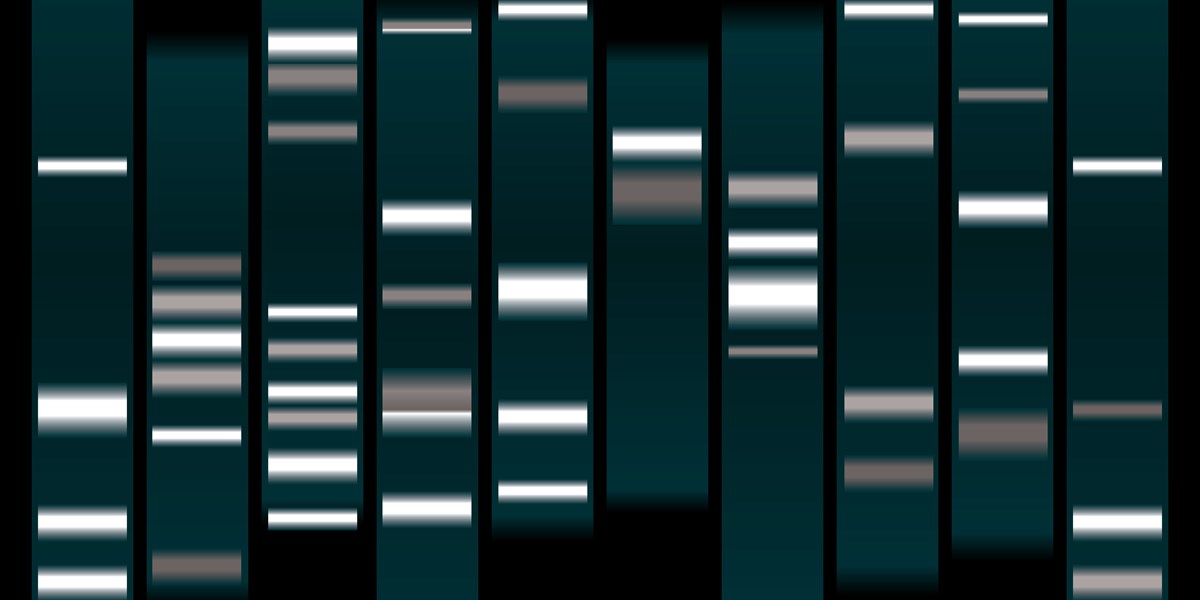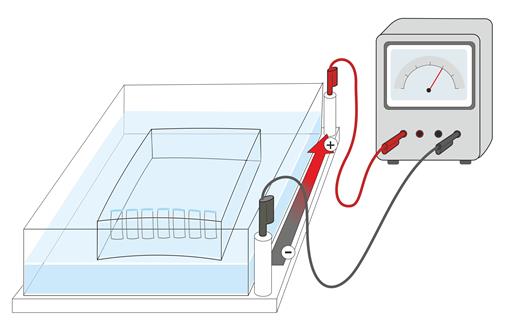Electrophoresis

Gel electrophoresis is a common laboratory technique used to separate and analyse nucleic acids. The technique requires the application of an electrical current to charged molecules. The electrical current allows the migration of the charged molecule, through a matrix. In this case a gel matrix.
The migration of these molecules is dependent on their size, structure and charge and the concentration of the gel matrix. Although the gel appears solid at room temperature, the matrix forms with small holes, to allow the molecules to travel through the gel.
DNA is made up of nucleotides, the overall net charge of the individual nucleotides is negative. Therefore, when subjected to an electrical charge, the nucleotides are attracted to the positive electrode.
Most classroom electrophoresis is carried out using an Agarose gel matrix. Agar is a mixture of agarose and agarpectin. The agarose is obtained by purifying agar. The pore size of the gel matrix can be altered by changing the concentration of the gel mixture.
A buffer is also used with the gel, this maintains the pH of the gel close to neutral, which favours the negative charge of the nucleotides.
A reference sample is always used alongside the sample under analysis, the reference sample is known as a ladder, and contains pre-determined fragment sizes, to compare the unknown sample against.
Carrying out Electrophoresis

Electrophoresis equipment is available from different manufacturers and suppliers, but the method is generally the same.
Firstly, the agarose-buffer mixture is prepared, most equipment will come with full instructions, on how do this, and what concentrations are needed for the size of molecules you are trying to separate.
Generally, the agarose powder and buffer are mixed with distilled water, and then heated to dissolve, and left to cool to approximately 60°C.
The mixture is then poured into the gel tray and the combs inserted. Any air bubbles should be dispersed before proceeding. As the gel cools, the teeth of the comb make a well, which the DNA samples will be transferred to.
Allow the gel to set, and then place the gel tray in the buffer chamber. More buffer is added to the buffer chamber, enough to cover the gel tray.
The DNA samples are loaded into the wells, using a micropipette, the DNA should contain a loading dye at this stage.
The cover is placed over the gel tray, and the equipment is then connected to the power supply.
Electrophoresis equipment:
For all our DNA kits and accessories please see our website:





